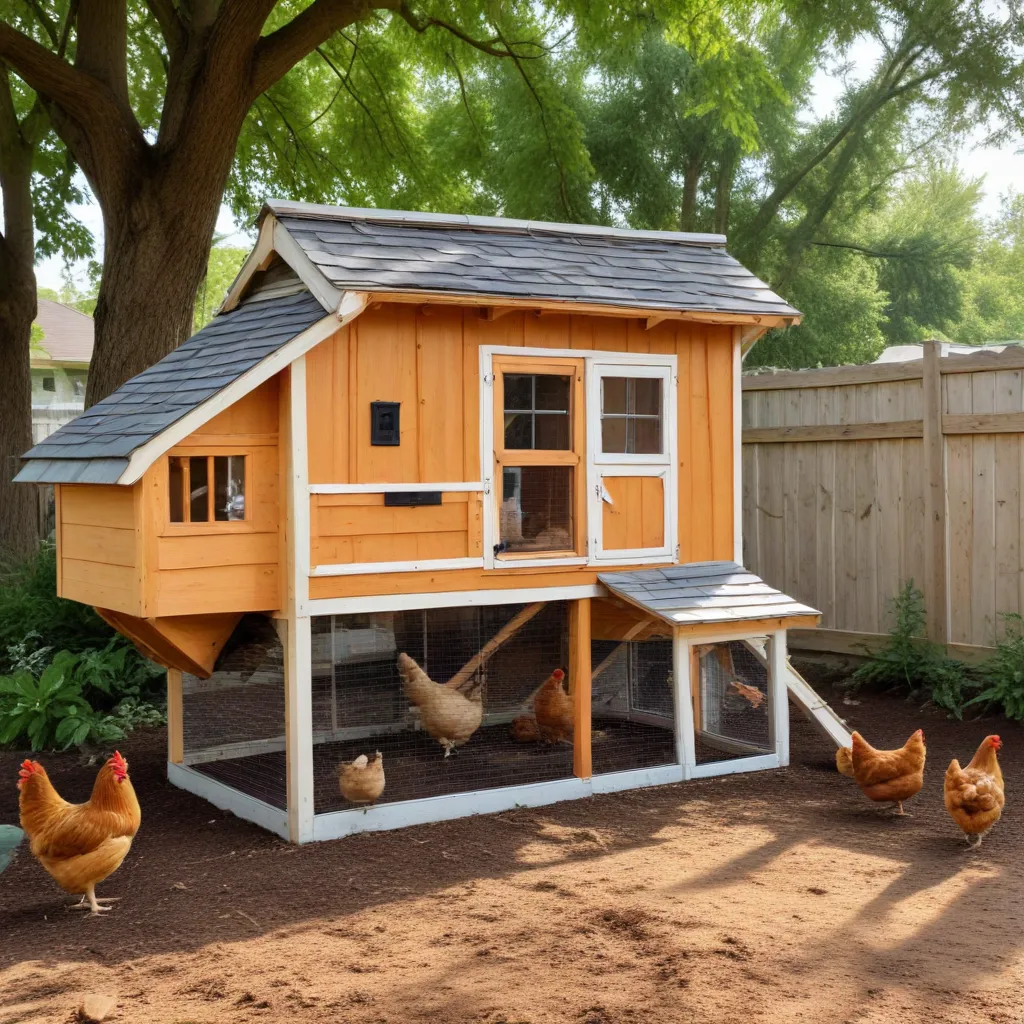
Raising backyard chickens has soared in popularity in recent years, as more people discover the joys of collecting fresh eggs and caring for these quirky, curious creatures. However, ensuring your feathered friends have a comfortable, safe, and functional home is crucial to their well-being and your enjoyment of the experience. This is where the design of your chicken coop comes into play.
Coop Size and Layout
The size of your coop will depend on the number of chickens you plan to house. As a general rule, you’ll want to provide each bird with about 4 square feet of interior space and 10 square feet of outdoor run area. This allows them to move freely, roost comfortably, and meet their basic needs. The layout should include a separate nesting box area, where the hens can lay their eggs, as well as designated roosting bars for sleeping.
Ventilation and Insulation
Proper ventilation is essential for maintaining a healthy, odor-free environment inside the coop. Incorporate windows, vents, or even small fans to ensure a constant flow of fresh air, while preventing drafts. Equally important is insulation, which helps regulate the temperature and protect your birds from extreme weather conditions. Consider using materials like rigid foam boards or reflective insulation to keep the coop warm in winter and cool in summer.
Nesting Boxes and Roosting Bars
Provide your chickens with dedicated nesting boxes, where they can lay their eggs in a comfortable, private space. Aim for one box per 4-5 hens, making them large enough for the birds to move around freely. Roosting bars should be installed at least 12 inches off the ground, with 8-10 inches of space per bird. These elevated perches allow your chickens to sleep safely and contentedly.
Structural Integrity
The coop must be sturdy enough to withstand the weight of its occupants, any inclement weather, and potential predators. Use durable, weather-resistant materials like pressure-treated lumber, galvanized hardware cloth, and heavy-duty hinges for the doors and windows. Secure the foundation with a solid frame and consider elevating the coop slightly off the ground to deter burrowing predators.
Aesthetic Design
While functionality is the primary concern, you can also infuse your coop with a touch of charm and personality. Incorporate architectural features like gabled roofs, decorative trim, or even a window box for herbs or flowers. This not only enhances the visual appeal but can also provide additional benefits, such as deterring flies or providing a soothing scent.
Accessibility and Functionality
Ease of access is key when it comes to caring for your chickens. Design the coop with features that make routine tasks like collecting eggs, refilling feeders, and cleaning the space efficient and user-friendly. Consider including a side access door, removable panels, or a hinged roof to simplify these chores.
Temperature and Climate Control
Chickens are relatively hardy, but they do require protection from extreme temperatures and precipitation. In colder climates, insulation and a heat source (like a deep litter system or infrared heater) can keep your birds comfortable. For hot, humid regions, focus on maximizing ventilation and providing shaded outdoor areas. Adjustable vents, curtains, or even a small water mister can help regulate the temperature.
Lighting and Shading
Lighting is an important consideration, as it can impact your chickens’ egg production and overall well-being. Provide adequate natural light during the day, and consider installing a light fixture on a timer to extend the daylight hours in winter. For sun protection, incorporate features like overhanging eaves, removable shades, or retractable panels.
Flooring and Litter Management
The coop’s floor should be easy to clean and maintain. A deep litter system, using materials like pine shavings or chopped straw, can help absorb moisture and odors, while also providing a comfortable surface for your birds to scratch and dust bathe. Regularly removing soiled litter and replenishing with fresh material is essential for keeping the coop clean and healthy.
Predator Protection
Safeguarding your chickens from predators is a crucial aspect of coop design. Use hardware cloth (a sturdy, galvanized wire mesh) to enclose the entire structure, including the run, and bury it several inches underground to deter digging animals. Secure all entry points with tight-fitting doors and latches, and consider adding motion-sensor lighting or even an electric fence to further deter unwanted visitors.
Egg and Feed Storage
Designate a dedicated space within the coop or in an adjacent storage area for storing feed, grit, and other supplies. This helps keep these essentials organized and easily accessible. You may also want to include a secure location for collecting and storing freshly laid eggs, protecting them from both your chickens and potential predators.
Emergency Exits
In the event of a fire or other emergency, it’s important to have a secondary exit that your chickens can use to escape the coop quickly. This could be as simple as a small door or hatch that opens directly into the run or a nearby secure area.
Designing a functional, comfortable, and aesthetically pleasing chicken coop requires careful planning and consideration of your birds’ needs. By addressing factors like size, ventilation, nesting, and predator protection, you can create a safe, healthy, and engaging environment for your feathered friends to thrive. For more inspiration and resources, be sure to visit Crooked Pines Farm – a community of fellow chicken enthusiasts and farm educators.


